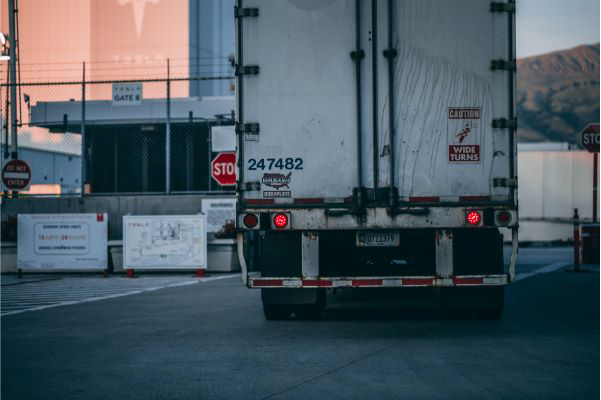What does a dry van truck look like? Think of your typical semi-truck or a box truck with a door on the back. You’ve seen it a thousand times. Dry van is the most common trailer type on the road. For that reason, we decided to write an article about dry van trucks and tell you everything you should know about this kind of trailers.
Dry Van Cargo Area
Most dry vans have doors that swing open to reveal the cargo area. You will most likely find wooden flooring in the cargo area, which provides a stable base for the palletized or boxed cargo. Dry vans are used for both FTL (full-truckload) as well as LTL (less-than-truckload) shipments. FTL shipments can be scheduled with custom pick-up and delivery specifications, while LTL shipments can benefit from lower pricing thanks to freight consolidation.
Dry Van Trailer Dimensions
Standard dry van trailers include a 53-foot trailer, a 48-foot trailer, and a 28-foot trailer (also known as a pup dry van), which refers to the inside cargo area on the trailer. It’s important to understand that a dry van is not ideally suited for transporting oversized shipments. The best options for oversized shipments have been, and continue to be, flatbeds and open box trailers.
Dry Van Weight Capacity
The maximum gross vehicle weight in the United States is 80,000 lbs. When you deduct the weight of the truck itself, an empty trailer, and the fuel tank with the amount of fuel in it, you are left with somewhere between 41,000 and 45,000 pounds (up to 26 pallets) that trucker can safely haul. Palletized products are most common as they can be efficiently and safely loaded and unloaded with a forklift or pallet jack from a dock.
Dry Van Commodities
Dry van trucks are used for shipping a wide assortment of freight that spans numerous industries. Shipping with Dry Van trucks is perfect for any packaged freight that does not require a temperature-controlled environment. Standard-van-sized load, palletized or boxed cargo most commonly shipped in dry van trucks includes electronics, furniture, clothing, and retail products; textile; plastic and building products; household goods; non-perishable foods and beverages.

Shipping Companies
Many shipping companies and third-party logistics providers focus on dry van shipping. That’s because dry van trailers are designed to haul any type of equipment. Moreover, it’s a lucrative service to offer, as there is high demand for shipping. Furthermore, dry van trucks are also readily available from various carriers. They don’t require service extras or special operations, making them one of the most affordable shipping options. It’s essential to bear in mind that dry van shipping is in exceptionally high demand, especially in the peak season. Dry van trucking also offers many jobs because they operate nationally, regionally, and locally, making it easier for truckers to find work closer to home.
Protected Freight
A dry van trailer has an enclosed shipping container that protects the freight from bad weather and other possible damage. Dry van trailers are commonly used due to their increased safety. The dry van cargo is protected from cargo theft in a locked container while on route to its next destination, which results in typically low freight claims with insurance companies for dry van shipping.
Consolidated Shipping
Many shipping companies offer discounted rates to businesses willing to have their freight delivered in the same container as another customer’s freight. This is called consolidated shipping, and it’s an excellent option for customers looking to reduce costs.
Dry Van Disadvantages
While being highly functional and versatile, dry van trucking doesn’t fit every shipment. One of the leading dry van disadvantages is the absence of temperature control, which makes shipping temperature-sensitive goods such as perishable food, beverages, or fine art impossible. Another disadvantage is the wooden floor in the trailer. Most of the dry van trailers have wooden floors that are vulnerable to high humidity and moisture. Wooden floors are easily damaged, which requires special treatment, repairs, and replacement costs if the trailer takes on the freight’s damage.
Dry Van Advantages
One of the leading dry van advantages is the “drop and hook” load feature. “Drop and hook” is a trucking industry term that refers to when a driver drops a full container at a facility and hooks their tractor to a pre-loaded trailer at the same facility. This method reduces transportation costs for shippers, increases potential earnings for carriers, and saves time for everyone involved.

